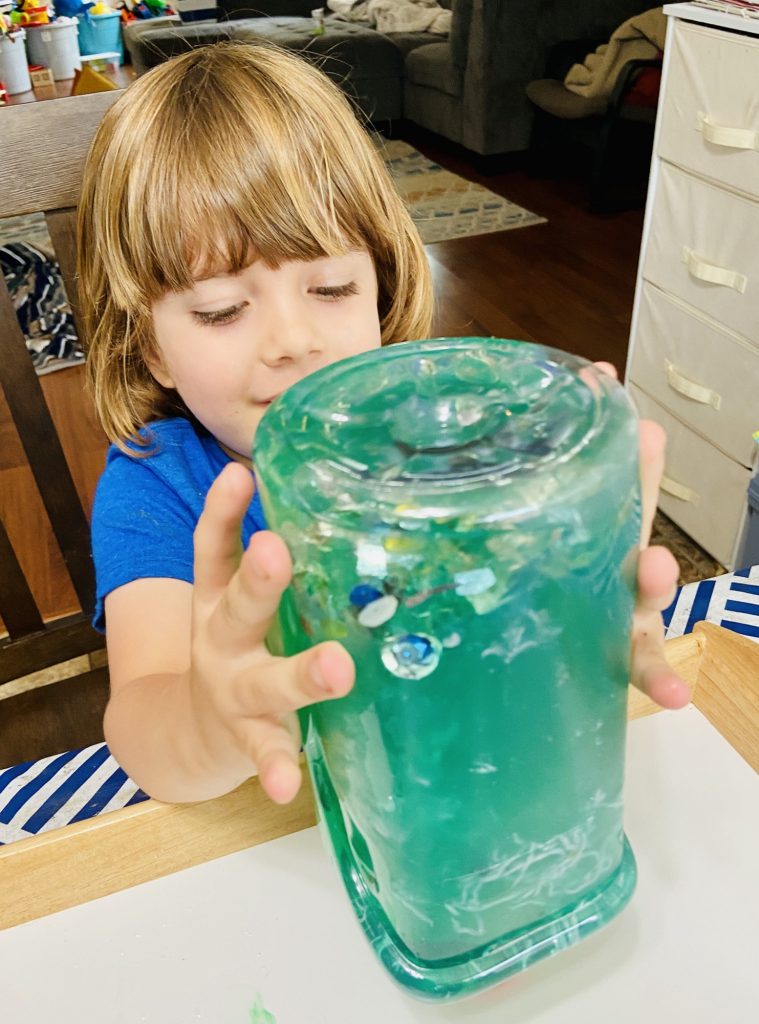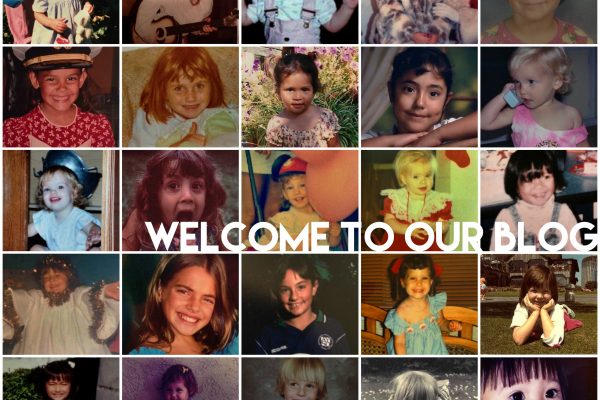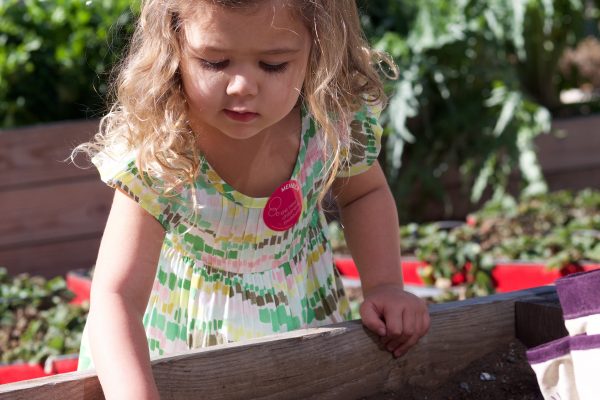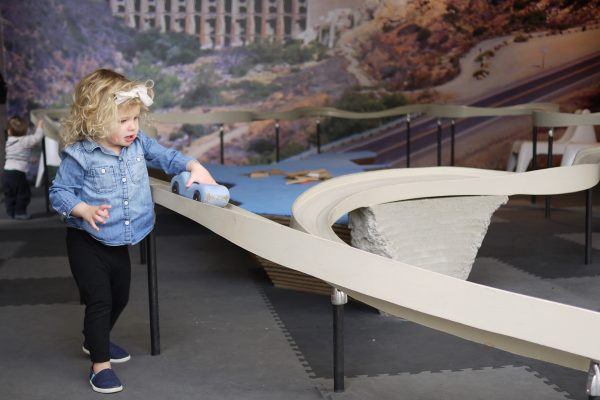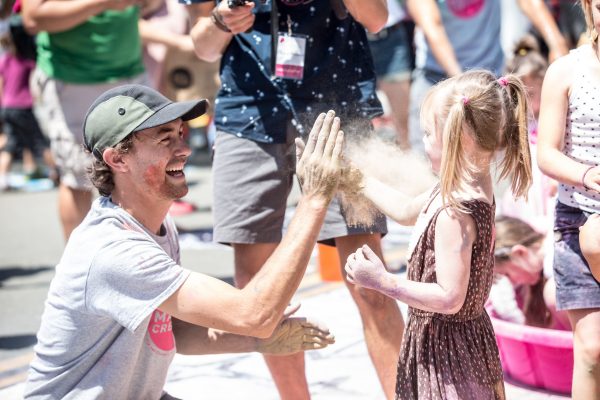Toddler Time at Home: Sensory Bottle Activity
Engage in a relaxing art-making experience with your child by creating a sensory bottle filled with objects that inspire calmness in this Toddler Time at Home activity! Find and repurpose recycled objects that are soothing to the eyes and mind. Put them inside a water-filled, artful sensory bottle that provides a calming visual for both caregiver and child to enjoy!
Directions
1. Collect materials. Prep your art space with the supplies listed and collect found objects or materials that inspire calmness. These found objects or materials are what will go inside your sensory bottle. Examples of calming objects include beads, glitter, plants, cotton balls, etc.
2. Fill bottle. Place the funnel or cone inside the plastic bottle opening. Encourage your child to select and then pour or place objects into the bottle using the funnel. Assist your child if needed, but also encourage them to try it themselves. You can also count with your child or listen together to the sound each object makes as it falls inside the bottle.
3. Add liquid. After adding objects, carefully pour water into your sensory bottle, leaving about an inch of space at the top. If interested, add a small amount of gel, cooking oil and/or food coloring. While observing what happens when the liquids come together, ask your child questions such as “What do you hear?” or “What do you see?”
4. Seal bottle. When the bottle is full, close it tightly with a bottle cap. Then secure the bottle cap with tape around the outside or glue around the inside perimeter of the cap.
5. Shake and rotate. Gently shake or rotate the sensory bottle in different ways and watch the objects, liquid and colors move slowly throughout it. Take the time to watch it with your child and use this time as an exercise to relax and meditate together. Place your finished sensory bottle in a space that can be accessed by both you and your child when calmness is needed!
TIP: Create calming colors inside the sensory bottle by choosing objects or materials that evoke calmness. You can also create a calming environment in the bottle using themes inspired by nature or seasons such as an island, forest, ocean, winter or summer theme.
Toddler to Transitional Kindergarten Learning Connections
Sensory art-making experiences are great ways to weave science and creative expression. An array of developmental possibilities include fine motor, empathy, language and literacy.
Recommended Related Reading (Ages 2-5):
- Deep Breaths by Carol Thompson
- Silence by Lemniscates
- Calm with The Very Hungry Caterpillar by Eric Carle
- Alphabreaths: The ABCs of Mindful Breathing by Christopher Willard PsyD
Preschool Learning Foundations (Social Emotional Learning and Visual Arts)
48 months:
- Seek to understand people’s feelings and behavior, notice diversity in human characteristics and are interested in how people are similar and different.
- Enjoy and engage with displays of visual art, inside or outside the classroom. Begin to express preferences for some art activities or materials.
60 months:
- Begin to comprehend the mental and psychological reasons people act as they do and how they contribute to differences between people.
- Enjoy and engage with displays of visual art. May expand critical assessment of visual art to include preferences for types of artwork or art activities.
